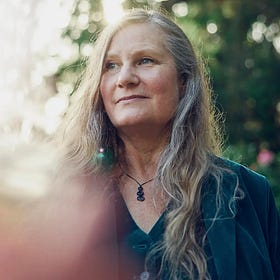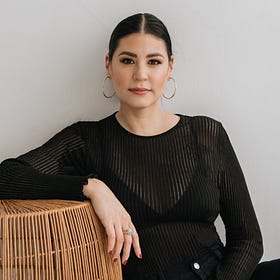Sabrina Imbler Finds Their Forms
"I'm really interested in going beyond that relationship of sameness."
Friends,
I’m a big fan of the journalist Sabrina Imbler’s self-professed beat: “creatures,” especially uncharismatic microfauna. That’s an A+ phrase, uncharismatic microfauna— both evocative and a little cryptic. Uncharismatic microfauna are, to put it bluntly, the small creatures of the world that humans are unlikely to find appealing. Wood rats. Mosquitos. Small nematodes.
Charismatic megafauna? Dogs. Lions. Seals. The ones that seem to have eyebrows. The ones that display behavior that seems relatable.
Sabrina Imbler began their journey as a science writer focused on a particular, extra-charismatic, extra-mega fauna: whales. And they worked in a fairly traditionalist way: they didn’t introduce their own perspective into their writing unless they had hands-on reporting. They took fellowships at major legacy newspapers and joined the time-honored tradition of working oneself to the bone to please the powers-that-be.
But over time their focus began to shift. They joined Defector Media, a worker-owned media company, which showed them a new, collectivist model for journalism. And their attention to the strict division between science reporting and personal writing began to shift, as did their concentration on megafauna.
Their debut collection, How Far the Light Reaches, has whales in it— but also little jelly blobules called salps and something resembling a cockroach-turned-space-monster named a sand striker. (To me, this particular microfauna is terrifying.) In each piece, Sabrina finds unexpected community with these creatures, charismatic or otherwise. The essay about salps is also an essay about the queer section of Jacob Riis beach in the Rockaways, and the beauty of swarms of all kinds.
The dominant way that I used metaphor in How Far The Light Reaches was to show that these animals were a lot more like us than we give them credit for. Especially with the deep sea: it's not this scary alien place, there are mothers, there are communities there. But as I write about non-human life right now, I'm really interested in going beyond that relationship of sameness. I'm interested in looking at species that don't necessarily make me feel seen but make me feel provoked in some way.
In our interview, Sabrina talks about their trajectory from the New York Times to Defector, and from one method of writing the natural world to another— one less centered around what humans find pleasing or relatable. If their first book was about finding commonality and community with other species, their current work is about writing about microfauna who don’t evince such obvious parallels to human modes of being or thinking. Sabrina’s next book is about bugs specifically because bugs ick them out. I can’t wait.
Mentioned in the episode:
Pulitzer prize-winner and Thresholds alum Ed Yong
Angela Chen’s book Ace
The deep-sea octopus who brooded for more than four years, and Sabrina’s essay about her
Not mentioned in the episode but an excellent read: Sabrina’s recent piece for Defector about being moved by the sight of hummingbirds.
That’s all for this week! If you like what we’re up to here, please share the newsletter and the podcast far and wide — it really does help.
-Jordan
Lidia Yuknavitch Waits for Her Wave
"We’re getting a really good look at what the vacuum of idiots looks like."
Amy Lin Looks Into the Silence
"I felt something slip away from me— disassemble. And it was that belief, that the dead can speak to us."








